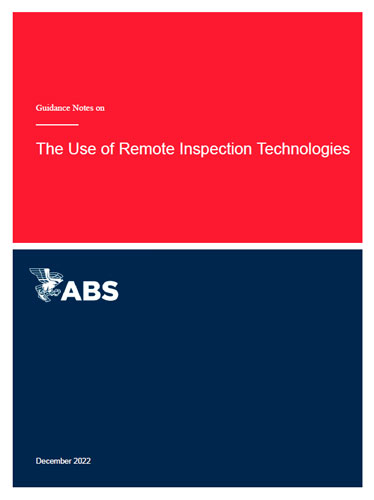Guidance Notes on the Use of Remote Inspection Technologies/–Ш–љ—Б—В—А—Г–Ї—Ж–Є–Є –њ–Њ –Є—Б–њ–Њ–ї—М–Ј–Њ–≤–∞–љ–Є—О —В–µ—Е–љ–Њ–ї–Њ–≥–Є–є –і–Є—Б—В–∞–љ—Ж–Є–Њ–љ–љ–Њ–≥–Њ –Ї–Њ–љ—В—А–Њ–ї—П
–Ъ–љ–Є–≥–∞ –љ–∞ –∞–љ–≥–ї–Є–є—Б–Ї–Њ–Љ —П–Ј—Л–Ї–µ
There are different remote inspection technologies (RITs) that can assist the attending Surveyor in evaluating a structureвАЩs condition. These RITs may be installed on remote inspection vehicles or robotic arms. Vehicles and robotic arms allow for collecting digital data to support an assessment of the structure'scondition and identify anomalies. This data may include photos, videos, light detection and range (LiDAR)data, and other NDE data. The remote inspection vehicle (RIV) is a remotely controlled vehicle operating in the air, underwater, or on structures. Some common types of RIV include Unmanned Aerial Vehicles(UAVs), Remotely Operated Underwater Vehicles (ROVs), and robotic crawlers. These RITs also benefit the asset Owner/Operator by reducing operational intrusiveness. These Guidance Notes offer best practices for class surveys and non-class inspections using RITs. These best practices include recommendations and guidance on applications of RITs, technology qualification, and proficiency of the remote inspection Service Suppliers, RIV operation, data handling, and data analysis. These best practices are intended to facilitate a safer, more effective, and efficient survey. The following IACS Recommendations and Requirements were considered in the development of these Guidance Notes.
Contents
Section 1 Introduction
1 General
1.1 Unmanned Aerial Vehicles (UAVs)
1.3 Remotely Operated Underwater Vehicles (ROVs)
1.5 Robotic Crawlers
1.7 Remote Cameras and Robotic Arms
3 Scope
5 Associated Documents
7 Terminology and Abbreviations
Section 2 Application of Remote Inspection Technologies
1 General
3 Application to Survey
5 Owner Self-Inspection
7 Remote Inspection Techniques in Survey Activities
9 Process to Accept RIT
Table 1 Roles and Responsibilities
Table 2 Remote Inspection Techniques for Marine Vessels and Offshore Units
Section 3 Guidance for Service Supplier Selection
1 General
3 Regulations
5 Quality Management System
7 Safety Management System
7.1 Safety Policy
7.3 Safety Risk Management
7.5 Safety Assurance
7.7 Safety Promotion
9 Management of Change
11 Recommendations for Service Supplier Selection
11.1 Equipment
11.3 Personnel
11.5 Documentation
13 Liability
15 ABS Recognized Service Supplier Program
Section 4 Survey/Inspection Process
1 General
3 Operational Limitations
5 Survey/Inspection Planning
5.1 Scope
5.3 Risk Assessment
5.5 RIV or Robotic Arm Operations Plan
7 RIV or Robotic Arm Operational Considerations
7.1 Pre-operations
7.3 In-operation
7.5 Post-operation
9 Data Review
11 Data Post-Processing
11.1 Machine Learning for Pattern Recognition of Coating Breakdown
11.3 Generation of 3D Models
13 Reporting
Table 1 Operational Limitations of RIVs and Remote Cameras and Robotic Arms
Table 2 Example Dropped Object Risks for Each RIT Type
Table 3 RIV Launch and Recovery Zones
Table 4 Three Models to Develop ML-based Image Recognition Tool
Appendix 1 References
Appendix 2 Remote Inspection Vehicle (RIV) Standards
Appendix 3 Checklist for Asset Owners/Operators
Appendix 4 Sample of Inspection Report using RITs




